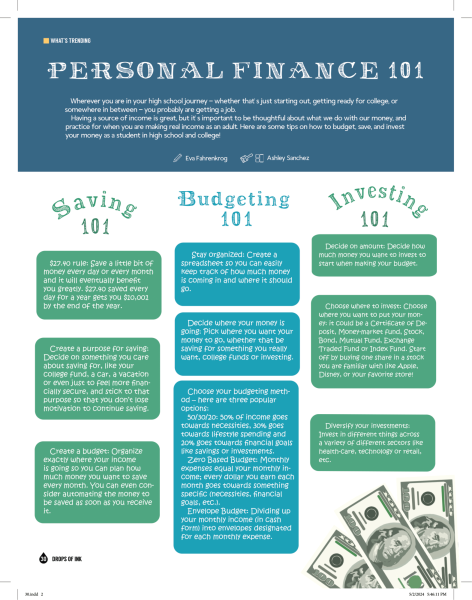Drowning in Debt: The Rising Cost of Tuition
Senior Jeanette Jenkinson was faced with a choice: attend the University of Illinois or Virginia Tech Institute. She weighed the advantages and disadvantages of each school carefully, taking many factors into consideration. She ended up committing to the University of Illinois for one deciding factor. The difference in tuition between the colleges was around $27,000.
She is one of the more fortunate students, as in recent years, college tuition has inflated to ludicrous proportions and made paying for higher education nightmarish. Currently, millions of students nationwide graduate with insane amounts of debt, being thrust into a post-graduation world already “in the red.”
The current situation
The college tuition crisis is only getting worse. In 2000, the average cost of attending a public 4-year college was $3,501, and $15,740 for a private 4-year college (Educationdata.org). Today, just twenty years later, the average cost for a public 4-year college is $9,400, the cost for a private for-profit 4-year college is $18,244, and the cost for a private non-profit 4-year college is $37,641.
According to Forbes, college tuition has risen over 169 percent within the past 40 years and outpaced inflation. It is the second largest expense an individual will make in their life, after the purchase of a home. In addition, data from Federal Student Aid (2021) shows that the average room and board cost is $13,620 for private and $11,950 for public universities. This adds up to hundreds of thousands of dollars of student debt that is extremely difficult to pay off.
Increased student dropout rates
Further, many students find the cost of tuition too much to handle. According to Forbes, 38 percent of students drop out of college because of financial shortcomings. On average, dropouts often encounter more economic challenges due to a lack of college credentials, on top of their staggering debt. The average individual with a bachelor’s degree has a 4.8 percent chance of living in poverty, compared to a 12.8 percent chance for an individual with only a high school diploma (EDI, 2021). The average college graduate leaves with $31,100 of debt (EDI, 2022). This is a conservative estimate, as there are over 2.6 million students with over $150,000 of student debt, mostly those who aim for medical or law school.
How this affects the economy
Further, many students find the cost of tuition too much to handle. According to Forbes, 38 percent of students drop out of college because of financial shortcomings. On average, dropouts often encounter more economic challenges due to a lack of college credentials, on top of their staggering debt.
Although the average individual with a bachelor’s degree has a 4.8 percent chance of living in poverty, an individual with only a high school diploma has a 12.8 percent chance of living in poverty (EDI, 2021). But the cost of the degree can be prohibitively high. The average college graduate leaves with $31,100 of debt (EDI, 2022). But this is a conservative estimate, as there are over 2.6 million students with over $150,000 of student debt, mostly those who aim for medical or law school.
Ways to reduce tuition costs
The future of higher education seems grim, but there are some ways to mitigate this situation. College tuition for in-state colleges is much lower than out-of-state, and merit or needs-based scholarships can also aid students in reducing high tuition prices.
“I committed to the University of Illinois over Virginia Tech because [it was] an in-state school, and I [would] be closer to home,” Jenkinson added. Furthermore, she received scholarship money from the University of Illinois for her intended major in STEM. “But at the end of the day, the difference in tuition between the two schools was somewhere around $25,000-30,000,” Jenkinson said. “Tuition was definitely the major deciding factor for me”.















